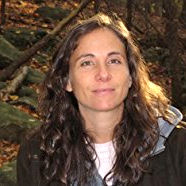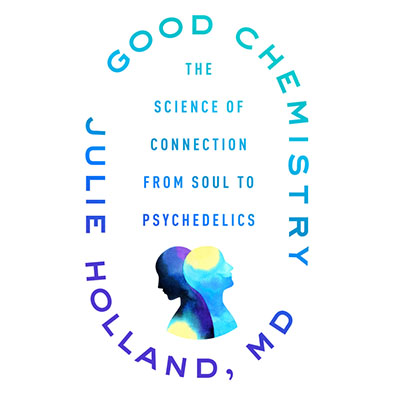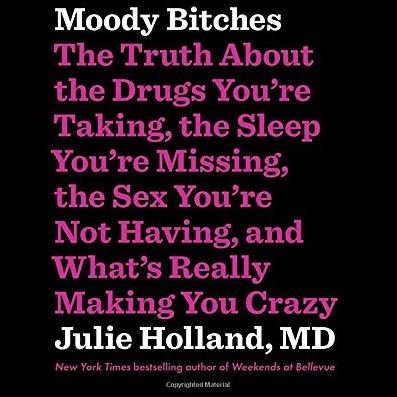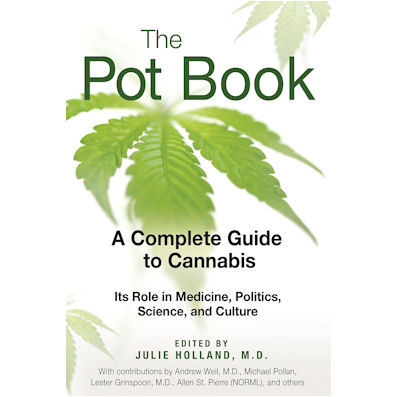Ecstasy Guide

Sample Chapters
Additional Chapters
Additional Chapter: Peace, Love, Unity, and Respect: Can Raving Save the Planet?
by Nina Bargoche
The principle force behind the rave scene was the discovery of the properties of MDMA. While it was still legal in the United States, young people discovered MDMA, known as Ecstasy, and its popularity spread throughout America and into Europe. Eventually, MDMA became most commonly known as a dance drug, and the gatherings than ensued became known as Raves. Such all night dance parties now occur every weekend throughout the world, and can involve groups as large as 10,000 or more people. There are no formal studies involving large groups of people taking MDMA at the same time. However, sociological experiments of this type are now occurring every weekend throughout the world. Only time will tell what the effects of raves upon society might be. Ask 10,000 ravers what a rave is and you might get 10,000 different answers, but the common underlying theme is the following: DJ's spinning some type of electronic music through a powerful sound system, friendly people, and a place to safely lose yourself in dance. There are many different types of raves, varying in music style, location and size, ranging from dozens of people to thousands, but one of the most important distinctions is the intent of the organizers. There are commercial events where the promoters' wish is to make money, and there are parties and gatherings that are not for profit, though donations are collected to help cover the cost of setting up the event.
Non-commercial events, often organized by groups of friends differ from commercial events in that participants are invited directly by the organizers or by other participants. This helps create a feeling of safety, community, and connection that enhances the success of the event. Successful events tend to repeat themselves as often as once a month and relationships between the participants evolve. This can have a dramatic effect on the quality of the events as people get to know each other, become closer, and feel safer. Although MDMA's powerful properties of fostering communication are always evident, it is at these events that MDMA begins to play a vital role doing what it does best enabling and teaching people how to heal themselves.
MDMA is a powerful tool that opens communication channels within one's self, and facilitates communication with others. It is true that MDMA can be found at most raves and that many, if not most, ravers take or have taken it at some point or another, but MDMA is not the only reason that people go to raves. Raves were designed to stimulate every aspect of the self. Loud electronic music takes control of your body and you can dance ecstatically for hours. Light shows, be they electric or from the moon and stars, dazzle the mind with visual delights. Fresh fruit and flavorful candies overwhelm the taste buds with waves of pleasure. Today's gatherings focus primarily on community. While many participants enjoy the recreational pleasures of MDMA in a rave setting, a large number of people are drawn to the truly open and honest interactions that spontaneously occur with other people.
Heightened sensations, the primal urge to dance, and feelings of love and empathy for the world we live in contribute to peaceful gatherings with diverse groups of people of various ethnic backgrounds and lifestyles. Issues of race, religion, politics and sexuality melt away as friends and strangers participate in group hugs and intimate conversation circles. One lesson soon learned at a rave is that these differences are nonexistent on the dance floor.
The role that MDMA has within the rave community is more than just recreational. MDMA is a tool that teaches people how to connect at levels that transcend those typically found at bars or social gatherings. Ravers deeply feel and truly believe that they are part of a special community that extends throughout the world. MDMA has been instrumental in establishing the foundation of this community based on free movement and dancing, and the precepts of Peace, Love, Unity, and Respect (PLUR). PLUR can be easily learned and eventually applied to every day life. Ravers gather on weekends at raves, parties, and gatherings of all sizes, to spend quality time together. The sense of community comes from an interconnectedness, and an underlying philosophy directed by PLUR and reinforced by the lessons learned from MDMA use. Ravers quickly learn that the world would be a better place if more people practiced peace, love, unity and respect. It is not unusual to overhear first time MDMA users saying:
- I wish I could give this to my parents
- I wish I could give this to the police
- I wish I could give this to the politicians who run this country...to the leaders of feuding nations...
- I wish everyone in the world could have this experience; the world would be a better place.
These feelings persist over time, as MDMA users long to share their permanently enhanced perspectives of the human condition with friends, loved ones, and society in general.
The rave community is more than just a group of people that use MDMA and dance to electronic music. It has become a group mind phenomenon, which is both tribal and modern. As ravers impose their need to live in a world of peace, love, unity and respect, this is having a growing impact on a society that focuses on individual gain. Ravers' sense of community extends into the everyday workings of the societies we live in. Ravers offer each other jobs, live together and rent large homes that become community centers and art centers. They start their own record labels, theaters, restaurants, nightclubs, dance troupes, and fashion lines. These endeavors are supported financially, as well as emotionally by the hundreds of members of the "tribe".
When a member of the community suffers a mishap, the tribe will quickly respond with fund-raiser dance events that can raise thousands of dollars in one evening. This sense of family is powerful and therapeutic, as it is an extension of the healing power of raves and of MDMA. MDMA lowers the need for defensiveness, for fear, anger, hatred, resentment, and greed. The rave and its attendant community is a haven from the dog-eat-dog world that we live in. How many people can say that they live in a community where there are up to several hundred people that would openly provide them with a meal, a place to stay, a smile, without a moments notice, in exchange for a hug?
The rave community is growing and spreading its philosophy into mainstream society. The sense of community also comes from the fact that many ravers have learned that this state of mind is not limited to raves and parties. Walking down a city street, it is as easy to recognize a raver from the clothes he or she might be wearing as it is from the way they will respond to a smile from a stranger or their elevated level of friendliness. A global aspect of the rave community is that ravers understand these basics rules of PLUR for parties and community throughout the world. There is an underground global network, so that, one can walk into a room of ravers at a party or an after-hours club anywhere on the planet and be openly accepted and even hugged by strangers, especially if you are recognized as a raver.
The War on Drugs and The Media have successfully vilified raves. According to the media, the typical raver is a teenager drug abuser. While this may be partially true, it very narrowly defines a diverse group of people ranging from teenagers, with and without drug abuse problems, to adults and professionals in their 20's, 30's, 40's and older, who may or may not have drug abuse problems. There are doctors, teachers, lawyers, scientists, writers, therapists, artists, computer programmers, engineers, entrepreneurs, and even members of the armed forces who are ravers; soon there will be politicians.
What is it about raves and MDMA that makes them so attractive to certain people? The MDMA rave experience allows people with all sorts of issues, problems and even traumas, the space to start dealing with their baggage in a way that can ultimately lead to healing. At a rave one can express themselves in any way that is necessary without fear of being ridiculed or made to feel self-conscious. Raves are about acceptance, unity, and compassion. Ravers express themselves emotionally and psychologically through ecstatic dance, or by sitting and talking to friends and strangers. At outdoor gatherings people will often find a secluded place to sit alone and meditate, address inner fears or just enjoy the beauty of their surroundings. This feeling of safety and acceptance can attract people with problems, fears, and insecurities. It is obviously a haven for teenagers. This is not to say that all ravers (or drug users) are people with deeply rooted psychological scars. But there are a high percentage of ravers that have something from their past or present life that needs to be dealt with. MDMA is not a way to escape; it is a tool that can be used to safely and without threat, delve into oneself and discover resolutions to various afflictions.
The negative aspects of these informal and often times unexpected therapy sessions are obvious. There is no follow through and little knowledgeable support and a few people end up confused, scared and incapable of dealing with some of the things they may discover about themselves. More experienced ravers are often burdened with the responsibility of taking care of and dealing with inexperienced people as they discover sometimes unpleasant aspects of their past and present lives. The real problem is the general propaganda and misinformation about drugs and their effects, and the lack of easily accessible and accurate information that should be available to the general public. This adds to the potential for anxiety and panic reactions that may occur upon taking a new drug. It is important to note that these types of experiences are rare and that most people have positive, though sometimes difficult, experiences at all types of raves, gatherings and parties.
At these gatherings, participants have a variety of experiences, but it is becoming more common to hear people discussing life-changing experiences, such as insights into necessary self-improvements, spiritual and religious awakenings, revelations, death/rebirth experiences, and ultimately, psychological breakthroughs. Some of these breakthroughs involve the reliving and the release of childhood traumas like rape, sexual abuse, physical trauma, or other repressed memories. The dance floor has become an informal therapy couch and the patients are also the healers and unwitting therapists. As these people learn that they can heal themselves and grow through MDMA, some talk about it and spread the word. As their personal need for these therapy sessions declines, a large number of more experienced ravers oftentimes greatly reduce and sometimes eliminate their use of drugs.
There are many ravers who do not have major issues or problems. For them the rave can act as a vessel of growth, enlightenment and spiritual awakening. Experiences of pure love, beauty and connection with the entire planet and every living thing are common. The sheer joy of dancing, being, sharing, empathizing, and loving life is the only truly addicting aspects of the rave experience. The synergy of dozens, even hundreds of people in this state, is an indescribably beautiful life-changing experience.
By trial and error, ravers have been actively striving to create a space for members of the rave community to have the most fulfilling experiences. These experiences are not necessarily drug-induced. There are many ravers who do not take drugs of any type. There are many more ravers that stop taking drugs at raves. MDMA is not physiologically addictive and if taken too many times consecutively it stops being pleasurable, yet ravers go back sometimes every weekend for years at a time. Proud of being able to enjoy themselves and dance as hard as anyone else without MDMA, they are strong role models and examples of the inner strength and energy that raves can cultivate.
This is most evident in the desert rave community of Southern California. For over seven years, a group of ravers have been gathering out in the Mojave Desert to dance, play, and just be under the full moon, the new moon, or any other opportunity that calls for a celebration. These gatherings, some of which can draw thousands of people by word of mouth alone, have become world-renowned for the quality of the events and the special atmosphere that is created. There are desert gatherings almost every weekend in Southern California. The result is that today, this self-proclaimed "tribe" of desert ravers has succeeded in creating a powerful healing space.
The community is an extension of this healing space and a place to put lessons learned into action. In the United States, and in California in particular, the impact of raves on the established community is difficult to fully assess. When it comes down to direct interactions between ravers and the authorities, the results are interesting. When a fire marshal decides to shut down an indoor rave because of a fire code violation (too many people for a given location) or the police receive a noise complaint, ravers will almost always cooperate and leave quietly.
There is seldom any type of violence or even anger directed towards the authorities as they shut down the event. Some ravers will thank the police or fire marshal for doing their jobs and others will even apologize for having caused an inconvenience. Most ravers believe that the police are in dire need of warm hugs and some good MDMA. This attitude, at first, baffles the police, but it seems that they are beginning to learn that these are truly peaceful gatherings. Another interesting fact is that there is extremely little, if any, drug related violence among MDMA suppliers or dealers.
Outdoor events can help establish even better relationships with the local authorities. Certain groups like MoonTribe, Integral Gathering and Blue Sky have established a reputation for extreme ecological friendliness (they will leave a campsite cleaner than it was before they arrived). They organize tree planting parties and campground cleanups in exchange for a safe and beautiful spot to dance. These events focus on the alternative dance/art community and drug use is not encouraged. Recently, ravers have started to publicly voice their views. Groups like Right To Dance stage peaceful, drug free protest dances at Federal Buildings and City Parks in California. At the Shadow Convention for the 2000 Democratic National Convention (DNC), ravers peacefully danced (Rave the Vote) for the duration of the DNC at the "4 Days of Unity" event without any incident or police involvement. Southern California has at least 50,000 ravers and the numbers are growing. These ravers are trying to improve the quality of their lives and of the people around them. A coalition called Gathering Of The Tribes had their first annual convention in Los Angeles this year, with the intent of educating rave organizers across the nation of the do's and don'ts of safe and responsible community-based raving.
DanceSafe, a nationwide organization, has been working with rave organizers and the police to educate the public about safe drug use. They set up MDMA testing booths at parties to help ravers determine if the MDMA they are going to take is safe. From a health perspective, ravers are learning to respect their bodies. The benefits of good dietary habits and exercise are evident and, contrary to popular belief, are not mutually exclusive with MDMA use. Most ravers, like most people, are not particularly self-destructive and are very interested in minimizing self harm. They like to be informed of the effects of the things they put in their bodies and like to take vitamins and nutritional supplements that can help reduce the already low physiological side effects of most drugs. A case in point is the phenomenon of people taking 5-HTP to counteract the low serotonin "hangover" that occurs after MDMA use, as it is believed that 5-HTP helps to restore serotonin levels in the brain. [Editor's note: It is fairly common for people to "pre-treat" and "post treat" their MDMA experiences with various health food supplements, but there is currently minimal clinical research to support or refute the safety and efficacy of these practices.]
The rave scene is slowly growing, evolving and turning into a movement of health-conscious, environmentally and politically aware young adults and professionals with a heightened sensitivity to the need for a compassionate society and a spiritually-awakened way of life. They have the sense of being part of a novel, cutting-edge model of society that has the potential to save the planet by generating a global sense of family, tribe and community. It is ironic that much of the establishment that vilifies rave culture is composed of adults who grew up and experienced a similar philosophical movement in the late 1960's and early 70's. Many of the older participants in today's raves draw parallels between both the atmosphere and the goals of the "hippie" movement of that time, with the only salient difference today being the lack of a unifying political agenda. Many parents may recall the "peace and love" motif of their youth and can relate to the PLUR values expressed by their children if they could only transcend the different music and drugs that are employed today. The superficial distinctions have been emphasized to isolate and force the rave culture underground, yet the underlying philosophical goals, in their striking similarity, only serve to reinforce a fundamental human need for connection with others, for love, empathy, tolerance, and peace.





